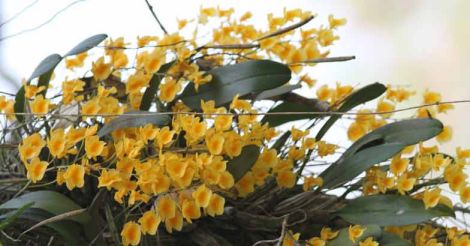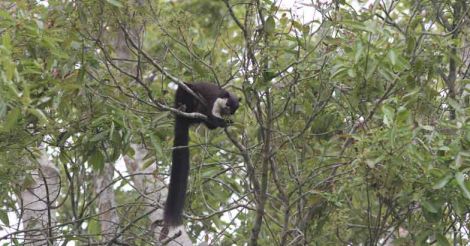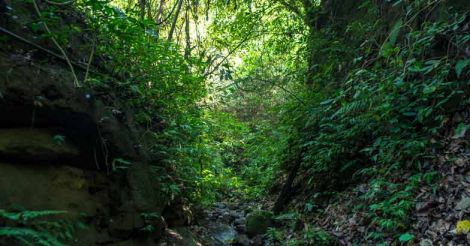The vast Asian landmass represents spectacular biodiversity with its distinct and endless land-forms, giant rivers and streams crisscrossing the continent and terminating into the nearby seas and oceans. The extremely fragile and unique terrestrial and aquatic Asian ecological systems spread across some of the most distinctive global biomes. The most amazing form of biodiversity from Asia is represented by the rich diversity of flora and fauna across South and SE Asian region.
Five Asian countries viz., China, India, Indonesia, Malaysia and the Philippines, within and around the region are recognized as mega-biodiverse nations with the richest diversity of flora and faun, a part of which is so unique that they are not found in any other corner of the globe.
The bio-geographic regions of South Asia, including Afghanistan, Pakistan, India, Nepal, Bhutan, Bangladesh, Sri Lanka and the Maldives, and SE Asia (comprising of Myanmar, Thailand, Vietnam, Cambodia, Laos, Singapore, Brunei, Indonesia, Malaysia and the Philippines), together with China represent a major share of global biodiversity. Unfortunately, this vast geographical region is also very thickly populated; and hence, the local and regional biodiversity have been significantly impacted by several anthropogenic pressures.
In spite of being a global hub of regional biodiversity, the South and SE Asian region in various parts are impacted by political unrest and destabilization, insurgency, lack of infrastructure, education and lack of awareness, poor economic growth, poor governance and insufficient conservation efforts. These factors, over the decades, have provided a breeding ground for international poaching, illegal trapping and capturing of local wildlife, illegal harvesting and over exploitation of local forests, rivers and streams and marine ecosystems, to mention only a handful.
The porous international borders between adjacent countries, lack of proper monitoring and surveillance of international border areas due to insufficient security forces and forest guards, together with the lack of necessary funding, training and failure in intelligence have given rise to illegal trafficking of several endangered species of wildlife and wildlife products throughout this region to the underground and illegally operating wildlife black markets of mainland China and several SE Asian nations such as Thailand, Vietnam, Cambodia and Indonesia. Every day in this vast region is marked by the unregistered and unmonitored plundering of available, scanty forest resources for the daily sustenance of the rural and aboriginal communities concentrated around the biodiversity hotspots.
 Dendrobium palpebrae. Photo: M K Hassan
Dendrobium palpebrae. Photo: M K HassanThe lack of economic opportunities in several parts of South and SE Asia together with poor local administration and poor governance, high levels of corruption, political instability, ethnic riots, mass migrations from rural to urban centers, and overall insecurity have forced many indigenous communities to turn towards poaching and related illegal activities in the forest areas as their only source of viable income for survival.
Furthermore, political instability, ethnic conflicts, border disputes in association with exponential growth of human population have taken a very serious toll on the local wildlife and forest resources, causing rapid erosion of the massive biodiversity base of the region. Several functional and resurgent insurgent movements across the region have further devastated the local ecosystems and put heavy anthropogenic pressures in the form of illegal encroachments and establishment of illegal human settlements in sensitive ecological areas rich in biodiversity, overgrazing, both intentional and unintentional forest fires, over exploitation beyond the carrying capacity of the region, spreading diseases form domestic animals and plants to local wildlife and forest flora, habitat fragmentation and massive loss of sensitive habitat areas due to human activities.
However, although the situation looks frustrating; it is not completely hopeless. Much could be done to preserve the unique biodiversity of South and SE Asia through intra and inter-regional cooperation boosted by Joint Conservation Initiative (JCI) among the adjacent nations of the region.
The South Asian Association for Regional Cooperation (SAARC) and the Association for Southeast Asian Nations (ASEAN) could play a significant game changer role if these two broad regional and economic cooperation hubs come together to extend cooperation in terms of preserving and protecting the regional biodiversity.
 Malayan Giant Squirrel. Photo: M K Hasan
Malayan Giant Squirrel. Photo: M K HasanJoint sharing of intelligence and patrolling of sensitive international borders, together with joint management of local cross boundary resources such as forests, mountains, rivers and streams, bays and gulfs and open ocean areas can help in significant conservation of local biodiversity. Exchange of modern technology, human resources, expertise in conservation efforts and sensitization of communities living adjacent to international border areas can effectively use the monitoring level on poaching, illegal wildlife trapping and trafficking as well as restrict movements of insurgents, traffickers, mafias and hooligans involved in attempts of destabilizing the region.
Joint training of security agencies and forest guards, intelligence sharing and joint surveys, research and development related to conservation can effectively help in strengthening conservation efforts across the region with all participating nations benefiting from the process.
Establishing joint management commissions of trans-boundary terrestrial and aquatic ecosystems can efficiently protect these areas and make them safe for local inhabitants, researchers, tourists and government and non-government agencies operating in these sensitive regions.
Initiatives for rapid economic development and employment generation throughout South and SE Asia with strong focus on the most vulnerable and ecologically sensitive areas can reap huge success in conserving local biodiversity. If executed and implemented with proper funding, planning and objectives, JCI has the potential to slowly transform the South and SE Asian region, both economically and ecologically.
Photo credits: Aranyak Foundation, Dhaka, Bangladesh.
(The author is a Canada and India based freelance journalist specializing in global geo-political, strategic and foreign policy issues, science & technology and environment & conservation related themes.)

























 Tulachari, Bandarban, Bangladesh. Photo: Tasfiq Mahmood
Tulachari, Bandarban, Bangladesh. Photo: Tasfiq Mahmood